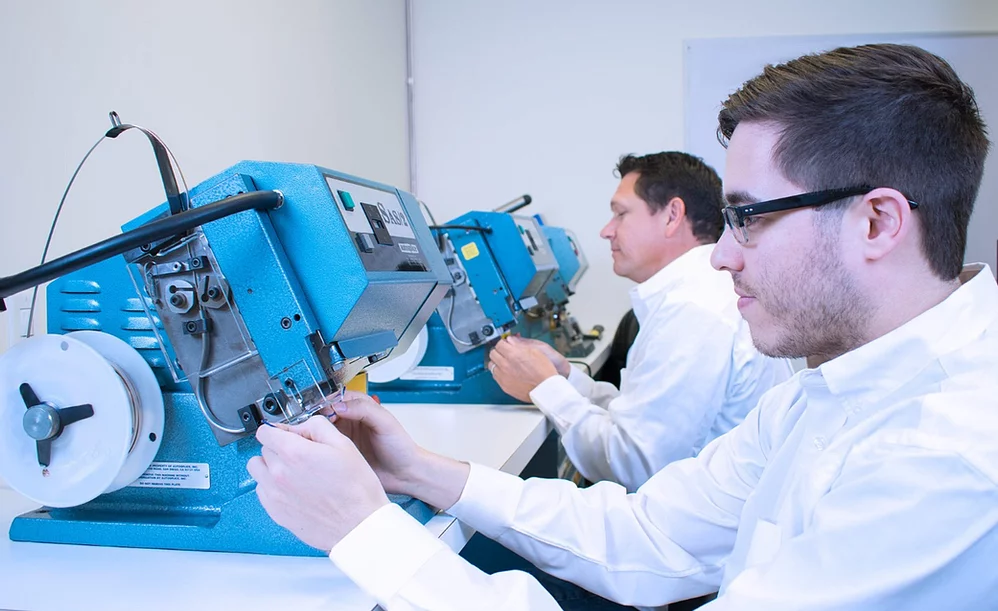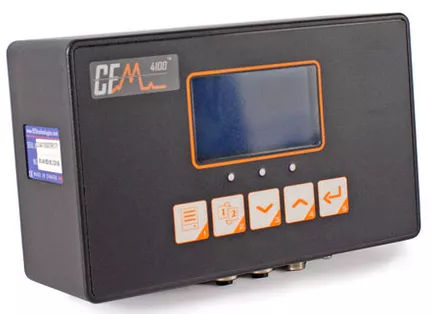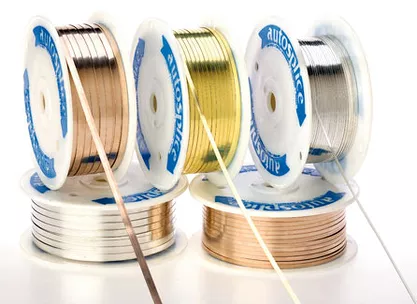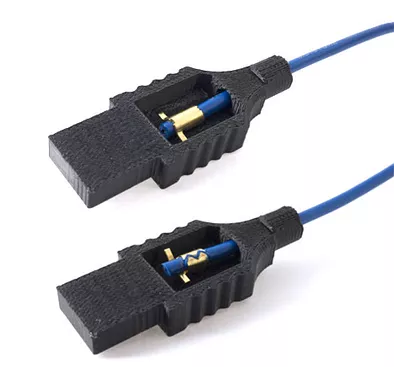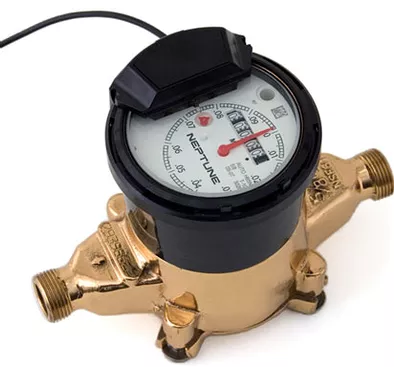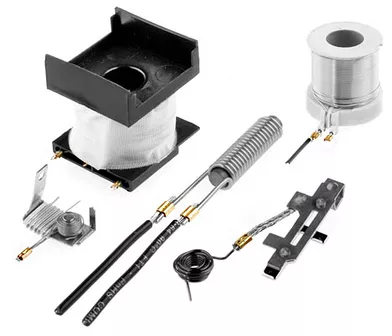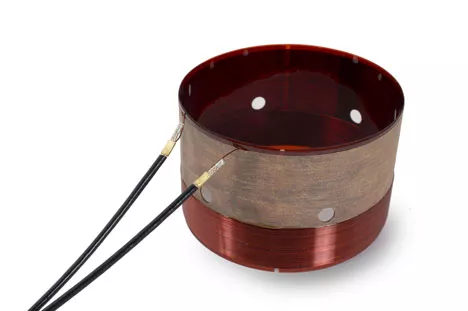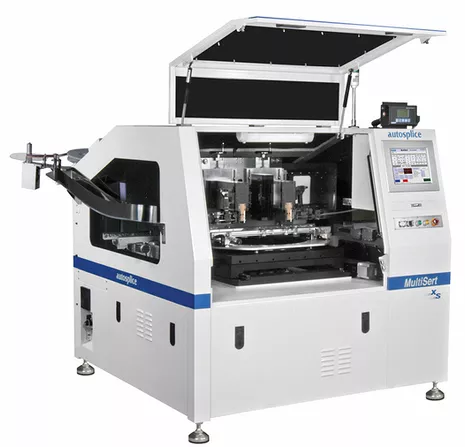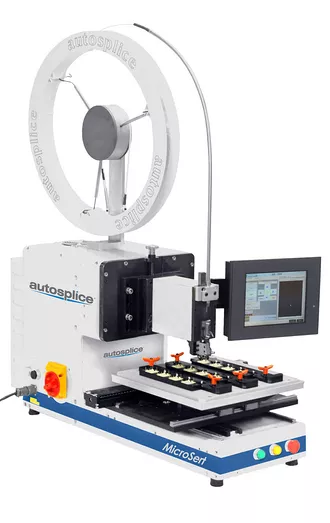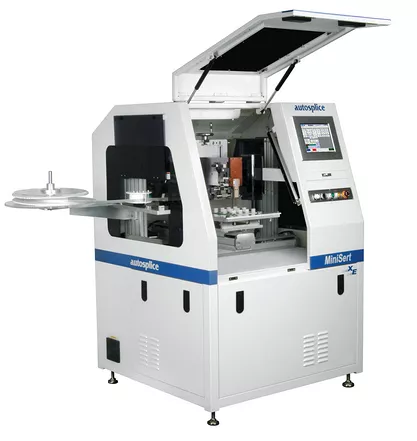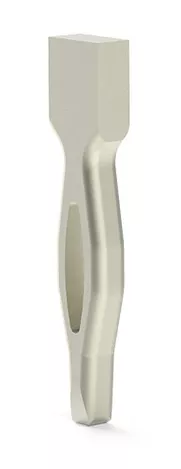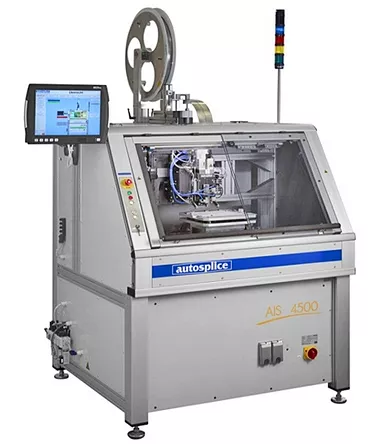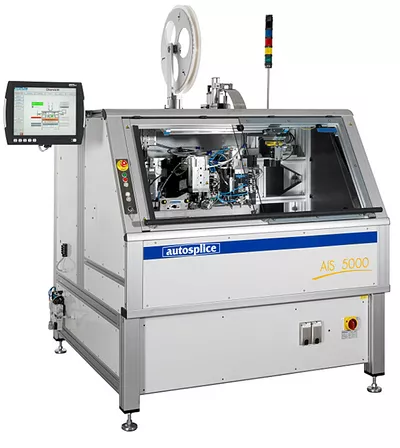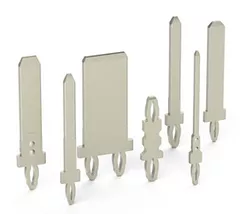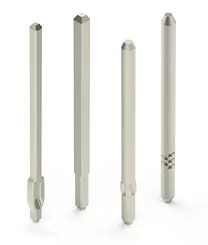SPLICE TECHNOLOGY
SPLICE APPLICATIONS
WIRE TO WIRE
Splicing / crimping is a proven technology that solves assembly challenges where soldering is inadequate mechanically due to vibration, susceptibility to pull forces, fatigue or other usability factors (heat sinking, wetting, flux restrictions).
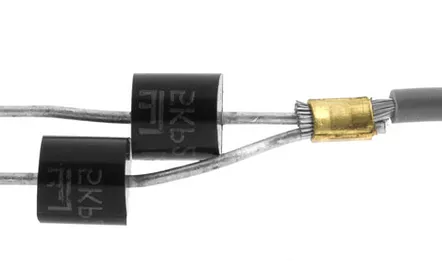
1 / 6
3-way splice connection Multi-component splice, parallel circuit
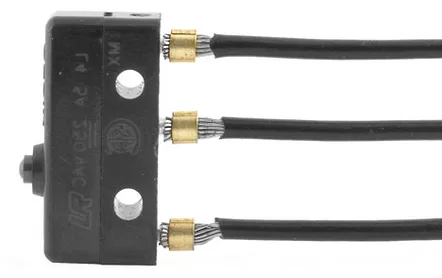
2 / 6
3-post micro switch crimp connection 3-post micro switch, used in automotive applications, splicing proved more reliable and faster than soldering
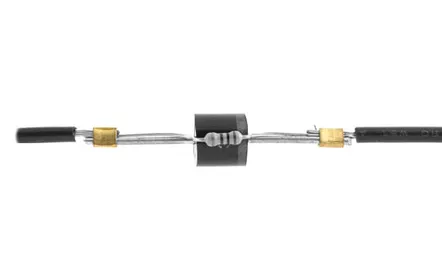
3 / 6
Multi-component crimp connection Multi-component jumper splice, RC band pass circuit
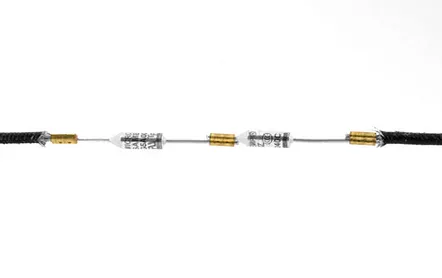
4 / 6
Multi-component series crimp connect Multi-component series splice, series circuit
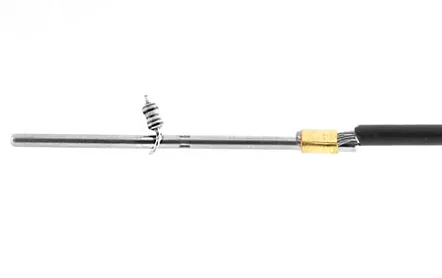
5 / 6
Wire to component crimp / splice Tungsten wire lead for UV light
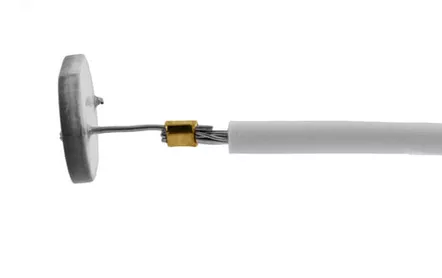
6 / 6
Wire to component crimp / splice Sensor for utility meters, uncompromised reliability
❮
❯
Autosplice
Autosplice Spliceband provides the lowest applied assembly cost connection when compared to soldering or resistance welding.
Spliceband is compatible with solid and stranded wire types and is proven to be more than 50% faster than wire soldering connections.
As the industry leader, our vast tooling library provides solutions to the most challenging wire types and materials. These tooling options can crimp multiple wires, 3-way wires, strain relief, magnet wire, tinsel wire, litz wire, and coax wire, of virtually all gauge diameters.
Produced in a variety of material options and sizes, Spliceband offers greater reliability than soldering with faster throughput.
Spliceband is produced with or without serrations with tool options than create a variety of finished splice crimps including, standard, ferrule, and pigtail versions.
WIRE TO PCB
D-BIT (wire to PCB crimp connection) provides high quality mechanical and electrical connection to PCB’s, flex circuits and other substrate materials, without the need for solder or traditional connectors.
Used with Autosplice SAS/2, SAS/3 and ACS2000 machines, D-BIT offers significant applied assembly cost savings for interconnections to printed circuit boards, flex circuits and other substrate materials by reducing components and assembly time.
D-BIT direct wire to circuit board technology can be applied to both solid and stranded wire.
D-BIT solves height restrictive assemblies where traditional connector methods are too tall or cost prohibitive. D-BIT assembly provides an excellent solution to PCB assemblies where solder joints cold form due to heat sinking.
Direct to Board Interconnect Technology eliminates the need for costly connectors, while producing a high quality connection.
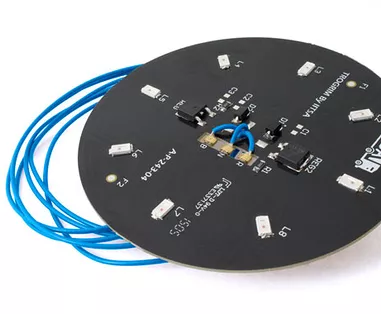
1 / 4
D-BIT (wire to PCB crimp connection)
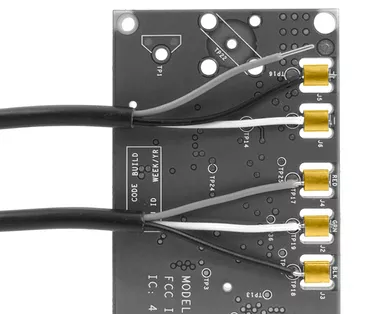
2 / 4
Wire to PCB crimp / splice
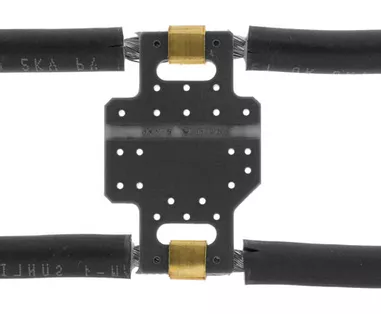
3 / 4
wire to board crimp connection) D-BIT power jumper, multi-wire to PCB, provides low profile connection
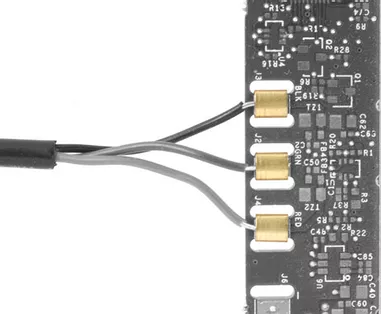
4 / 4
wire to PCB splice connection
❮
❯
STRAIN RELIEF
Provides protection against cable failure caused from pulling, pushing, twisting.
Prevents mechanically applied forces from being transferred to the electrical conductor terminations
Supports a minimum of 10 lbs. pull force without slipping on jacket
Cable remains intact when crimped and when stressed by pulling, pushing or twisting forces
Works with over-molding, solid/smooth, and segmented wire grommets and bend reliefs
Small form factor saves space, fits most applications
Securely anchors and protects cable, reinforces mechanical strength
Manufactured from brass for durability and low cost, high volume applications
Works with Autosplice ACS2000 machines for efficient assembly (requires Strain Relief Tool Set)
MAGNET WIRE
Spliceband for magnet wire (M-Spliceband) provides a cost effective and reliable method for connecting wires to electric motors, transformers, speakers, coils, alternators, solenoids, inductors and small appliances.
M-Spliceband uses a proprietary serrated profile, penetrating the various varnishes and coatings used on copper and aluminum magnet wire, producing a strong, reliable gas-tight interconnection between wires.
Multiple wires can be spliced simultaneously, with no pre-stripping required. Supported by a variety of tool sets, M-Spliceband enables high productivity splicing connections with no wasted material.
Using magnet-piercing splice band, the splice system will produce a connection of an unstripped magnet wire directly to wire or component.
SPLICING MACHINES
SAS/2
SAS/2 has unprecedented machine life; over 25 years of reliable service reported by many customers.
The SAS/2 splicing system consists of a semi-automatic machine and a reel of continuous Spliceband material. The machine feeds, cuts, and forms the Spliceband to create highly reliable connections without expensive pre-formed crimps.
SPECIFICATIONS
Eliminates soldering
Scrap free operation
Can be integrated into automated system
Excellent process reliability
Comprehensive Toolset library
Push action Spliceband feeding mechanism
Functions with Spliceband material types and widths from 2 mm to 9 mm (Standard widths include 2 mm, 4 mm, and 6 mm)
110 V or 230 V available
ACS 2000
Designed and tested throughout Europe, this proven platform provides reliable repeatable performance across a wide spectrum of interconnect challenges, such as: wire to wire (solid or stranded);wire to switch or component lead to switch; wire or component lead to flex circuit; wire or lead to flex circuit; wire or lead to PCB; flex circuit to PCB.
SPECIFICATIONS
Servo Motor Drive technology
Five piece modular tooling for quick application set-up, changeover and maintenance
LED illuminated work area
Micro-adjust spliceband feed mechanism (increments of .05 mm, .002″)
Digital Crimp Height adjustments (increments of .01 mm, .0004″)
Dual plate feeder eliminates damage to spliceband by rollers
Programmable splice preselect function counts down and stops at end of job
CE Certified
ACS 2000 Global Splice System is the most advanced, adaptable splice interconnect applicator available for global manufacturing environments.
SPLICE ASSEMBLY MADE EASY
Use our expertise and unlimited capacity to supplement your existing production or assemble it from scratch.
Splice assembly services performed with lower costs at our manufacturing center in Mexico.
ISO TS16949 quality certification meets your highest manufacturing expectations
SPLICING MACHINES OPTIONS
CFM 4000 CRIMP FORCE MONITOR
It is an optional feature for all our Splice Machines, where process monitoring is preferred.
Designed and tested throughout Europe, this proven platform provides reliable repeatable performance across a wide spectrum of interconnect challenges, such as: wire to wire (solid or stranded);wire to switch or component lead to switch; wire or component lead to flex circuit; wire or lead to flex circuit; wire or lead to PCB; flex circuit to PCB.
Production Quality Monitoring aids in the detection of:
Incorrect wire cross-section
Incorrect terminal
Inconsistent terminal material
Insulation in wire crimp
Incorrect insertion depth
SPLICE MATERIAL
Spliceband material is engineered for a variety of applications and operating conditions.
It is suitable for multi-strand and solid core copper and aluminum wires.
Available in several widths, thickness and metal types, our Spliceband materials and machines provide reliable connections meeting and exceeding the following standards:
UL 486C
MIL – STD 202
IEC 60352-2
IPC/WHMA-A -620
RoHS
Spliceband is manufactured with unique serrations for magnet wire or standard wire types.
| MATERIAL |
APPLICATION |
|
| Brass |
General Purpose up to +120°C |
| Tin Plated Brass |
General Purpose up to +120°C resists corrosion, pre-soldered components |
| Copper Nickel |
High Reliability up to +260°C, resists corrosion, weldable |
| Nickel Plated Steel |
High Reliability, up to +260C resists corrosion, weldable |
| Stainless Steel |
Specialty Purpose, over +260°C, resists corrosion |
| Inconel |
High Temperature +600°C |
| Customer Specified |
On request |
PIN INSERTION MACHINES
As a global manufacturer of flexible PCB pin insertion machines and interconnect components, Autosplice offers a full range of automated assembly equipment tailored to your manufacturing requirements.
From fully automated dual-head inline systems to precision bench-top pin machine, our quick change module systems offer cost-effective, rapid-turn solutions for today's dynamic manufacturing environments.
We have tooling available for solid press-fit, compliant solder less components; PCBs; plastic, ceramic and metal substrates. Additionally, all tooling is transferable across the entire range of PCB pin insertion systems, accommodating future growth needs.
Our pin insertion machines are available in single-head or dual-head configurations, offering electronics manufacturers an ideal combination of flexibility and throughput for both high-mix and high-volume production environments.
Our pin insertion solutions are supported by global customer service staff and factory trained technicians who are ready to assist you with both machine- and component-related design or service.
MultiSert
Fast and simple multiple parts and tooling changeovers along with auto-adjustment conveyors allow significant flexibility of the pin insertion manufacturing process.
Multisert XS is the culmination of over 50 years experience, servicing the automotive, telecommunications, medical and industrial market needs for applied interconnects.
SPECIFICATIONS
Insertion rates up to 3 per second on .2” (5.08 mm) pitch
Up to 2 insertion heads
18” x 18” Insertion area (457 mm x 457 mm)
Accuracy +/- 0.001”
Vision system for PCB error correction
PCB anvil support
Touch screen monitor
Windows 7 operating system
SMEMA interface
Interlocked enclosure with light curtain
Component end of reel sensors
Optional continuity sensor
Inserts soldered and press-fit components
SYSTEM OPTIONS
Programmable rotary stage (0-360 degrees)
Real time insertion force monitoring
CE Compliant
Top or bottom view bar code scanners
INTRODUCING
0.4 mm PRESS-FIT TERMINAL
The all-new 0.4mm EON press-fit zone is designed to work with the now industry-standard plated-through-hole size of 0.60±0.05mm. The press-fit zone achieves optimum retention strength at each end of the PTH size range by employing a combination of elastic and plastic deformation, which is biased towards the former at the lower end of the PTH size range, and towards the latter at the higher end of the PTH size range. At no point is the elongation allowed to exceed the material limit, to eliminate the likelihood of micro-crack formation.
Autosplice has elected to standardize the press-fit material to the high-performance CuNiSi (C19010), but will offer CuSn4 and CuSn6 if required. Additionally, the terminal will be offered in standard and reduced tin plating. The latter is especially relevant in high-density terminal applications to reduce the likelihood of tin whiskering.

NEW PTH SIZE OF 0.60±0.05 mm
The all-new 0.4 mm EON press-fit zone is designed to work with the now industry-standard plated-through-hole size of 0.60±0.05mm.

STANDARD MATERIAL
Autosplice has elected to standardize the press-fit material to the high-performance CuNiSi (C19010), but will offer CuSn4 and CuSn6 if required.

EXCEEDS REQUIREMENTS
The 0.4 mm design was then refined by laboratory testing to achieve the current design, which exceeds all published automotive Tier 1 requirements.

TOOLING & ASSEMBLY
Assembly of the 0.4 mm press-fit terminals to PCBs can be efficiently accomplished with an Autosplice insertion machine and a custom-designed insertion head


